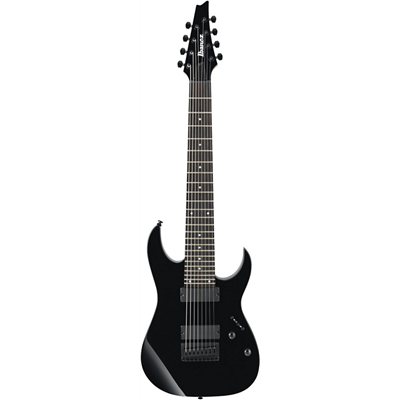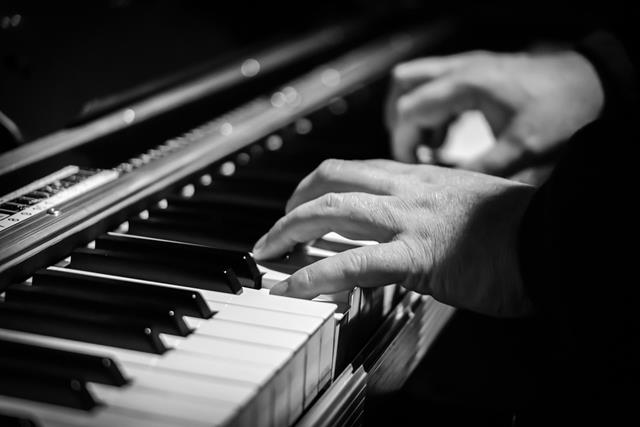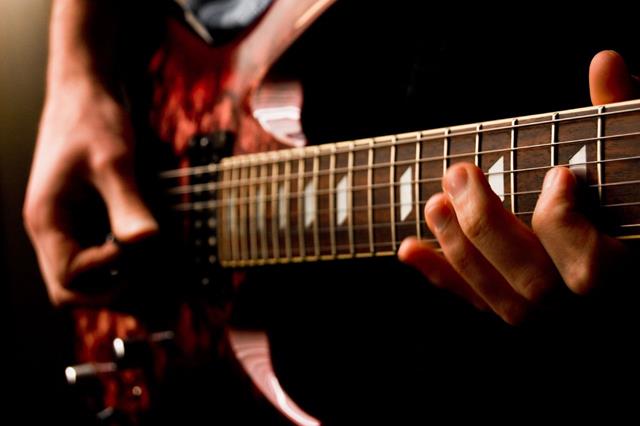Choosing the right keyboard amplifier might be a daunting challenge because you must consider various options and details. Especially, if you have never bought one before.
When you are in a music store or shopping online for a keyboard amp, you need to consider things like wattage, speakers, channels, effects, and so on.
What To Consider When Choosing A Keyboard Amp
To make it easy for you, I have compiled a post that will give you recommendations about what to look for in a keyboard amp whether it’s an affordable or expensive one.
Speakers
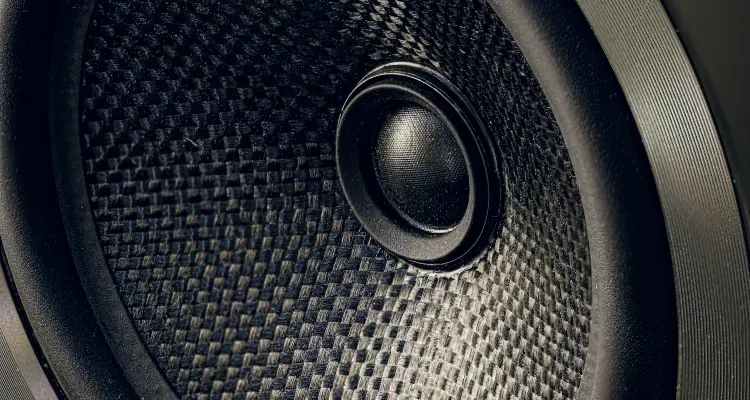
The most common speaker setup consists of a 12-inch woofer and a smaller tweeter, usually around 1 inch. This combination is well-balanced and allows for a wide range of frequencies. Woofers are responsible for producing low-end bass sounds, while tweeters handle high-treble sounds effectively. Most best keyboard amps come with a 12-inch speaker and a woofer.
Manufacturers often add midrange horns in order to split the frequency spectrum even further, resulting in a more defined output of the amp. Bass responses can be enhanced by adding single or dual 15” speakers. To extend the capabilities of the amplifier to its maximum, you can connect subwoofers as extension cabinets. Speakers are important parts of the amplifiers because they “read” your music and project it accordingly.
Channels and Effects
The very feature that distinguishes a keyboard amplifier from others is the one that has a primary impact on your choice. The versatility of an amplifier depends on the amount of its channels. The majority of keyboard amps offer several channels (mostly from 3 up to 5), providing you with the opportunity to connect multiple keyboards, instruments, or microphones.
This means that they can be used as individual PAs or stage monitors. Quality amps usually have separate control knobs for each channel. Some might even offer EQs to filter your frequencies.
Furthermore, numerous keyboard amplifiers come with sound effects. If you enjoy exploring different sounds, this feature will be a valuable advantage for you. For example, the Behringer Ultratone KXD15 can produce chorus, reverb, pitch shift, delay, and various other effects. Consequently, buying a keyboard amplifier offers even more advantages.
Wattage
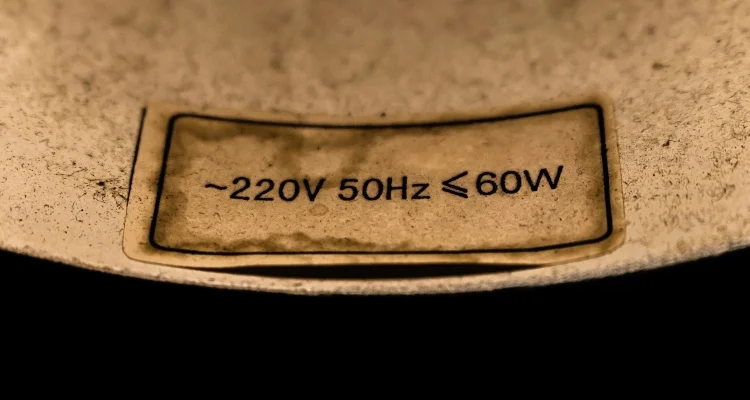
When you read about keyboard amplifiers, the first thing you notice is the number of watts. Naturally, you may wonder what this means and how to determine the ideal number. The answer lies in the size of the venue: if you perform in a large space in front of a big audience, you will require more watts to power larger speakers.
Even though the majority of live performance venues provide you with in-house PAs and you might not need to bust your head about the delivery of your sound, you still need it to be clear and undistorted. You do not want your efforts to get lost because of a wrong amp.
Speaking of that, the wrong amplifier for an indoor performance may be the best one for an outdoor gig. You should always keep in mind that you will need a louder and more powerful amplifier outdoors (therefore, more watts) because factors like wind and noise of the environment interfere with the delivery of the sound. You have to make sure that your music will be heard, otherwise, what is the point?
Also, it’s important to consider whether you play alone or in a group when selecting the wattage for your amplifier. If you play solo, a lower-wattage amplifier would be suitable as it will provide the right amount of amplification. However, if you are in a band, you will need a more powerful amp to ensure your keyboards are not drowned out by guitars and drums. Take your time and let the wattage of the amplifier do its job.
Inputs and Outputs
Can you imagine all the excitement you get when waiting for your amplifier to be delivered? That grin on your face when a postman knocks on your door… now imagine the change of your facial expression when you discover that your gear simply cannot be plugged in with your beloved amp. What a disappointment.
To prevent negative feelings and bad experiences, make sure to check the inputs of the keyboard amplifier you want. Usually, multi-channel amps have multiple ¼” inputs for keyboards.
Sometimes they even have a combination of ¼”/XLR inputs for your microphones. This allows you to bring the whole system together by connecting the amp to the PA while using your amplifier’s speaker as an on-stage monitor. You can send your effects signals through the output, attach it back with an input, and play a wet signal through your amplifier.
Portability
This is really important for bands that travel a lot. You need a keyboard amplifier that is strong but easy to move around, so you can take it with you to different places. It’s even more important for people who want to practice at home and don’t want to hurt themselves carrying a really heavy amp.
Not only that, portability is a feature that makes the whole process more enjoyable and comfortable. Luckily, nowadays most brands offer keyboard amplifiers that are lightweight and compact, consisting of amp and speaker (for example, Peavey KB2 50 or Vox VX50KB).
Even though some of the powerful keyboard amplifiers do not have this feature, you can still make it work if you consider carefully your audience and your aims. Sometimes you are so mesmerized by the sound of an amp, that portability becomes less of an issue. Just stick to your preferences and act accordingly.
The Difference Between PA and Keyboard Amplifier
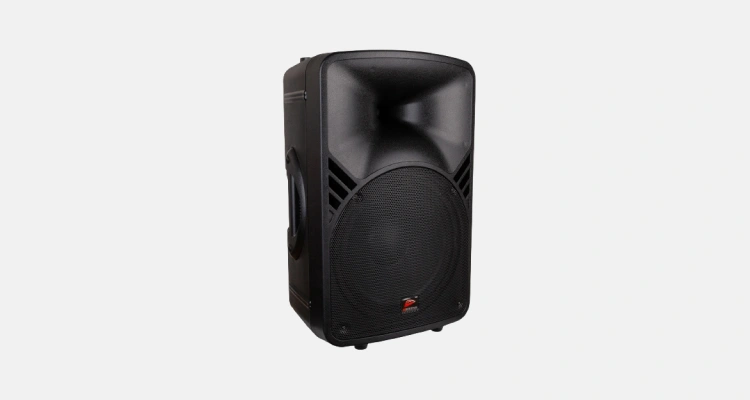
During the last decade, the functionalities and features of keyboard combo amplifiers and PA (public address) systems started to comply with each other. Though most of the amplifiers can be easily used as PA systems for small venues, the difference between those two is quite noticeable.
Firstly, keyboard combo amps have limited capabilities in terms of speaker elevation. Unlike PA systems, you cannot easily increase the volume of a keyboard amp. PA systems, on the other hand, have a more dispersed sound output that is suitable for large audiences. The sound produced by keyboard amps tends to be absorbed by the front rows of the crowd, making it inaudible for the rest. This is not desirable for musicians. Furthermore, PA systems have speakers that can be controlled and adjusted to achieve the highest signal output.
Secondly, the wattage of small PAs and small keyboard combo amplifiers differ greatly. It is common for a small PA system to have 100 watts, whilst the keyboard amps of the same size would only have 20 to 50 watts. This means that lead vocals might be lost if you use keyboard amps with them.
Finally, almost every PA system has several speakers that allow you to point them at the audience and generate a more defined sound. The majority of combo keyboard amplifiers have single-speaker cabinets with poor room coverage. With PA systems you can angle the speaker cabinets increasing the arc of the sound dispersion.
Keyboard amplifiers can serve as a backup for PA systems in emergencies, but they have different purposes. However, it is important to note that keyboard amplifiers are highly functional and can greatly benefit keyboardists.
Are All Amplifiers The Same?
The answer to this question is a solid NO. You might think that getting an extra amplifier specifically for your keyboards is an unnecessary headache and a waste of money, but trust me, my friend, it is money well spent. Investing in a good keyboard amp will drastically change your game and the difference between sound qualities will be so profound, you will start questioning your existence.
You might think I’m exaggerating, but once you connect your first keyboard amplifier, you’ll understand what I mean. It’s tempting to use an unused guitar amp for your keyboards, but I’ll explain why it’s better to focus on the instrument and select the appropriate equipment.
First of all, the main aim of keyboard amplifiers is to provide rich low-frequency sound for your keyboard basslines and crisp high-frequency sound for higher notes. They are designed to have zero distortion, while guitar amps are purposefully made in a way that creates distortion or overdrive. So the sounds that keyboard amplifiers deliver, are powerful thus clean and pure. One of the few exceptions to this rule is the keyboard amplifiers specifically made for Hammond organs, such as Leslie speakers.
Second of all, guitar amps are usually made for one instrument, whilst keyboard amplifiers are equipped with mixers and different channels for several keyboards.
And finally, a keyboard amp can be a combination of pre-amps, power amplifiers, full-range speakers, and horn-loaded tweeters, whereas guitar amplifiers are mostly sold as standalone amplifier units (containing preamplifiers and power amplifiers).
Conclusion
There is nothing quite like the joy of hearing your first notes on a keyboard amplifier. The crisp sound fills your soul with warmth and excitement. All the time you spend choosing the right amplifier becomes less important at that moment. Whether you are practicing or performing live, having a professional keyboard amplifier elevates your skills and improves the quality of your sound. Remember, it all comes down to your personal preferences. Even the simplest keyboard amplifier can work wonders if it is the right fit for you.



